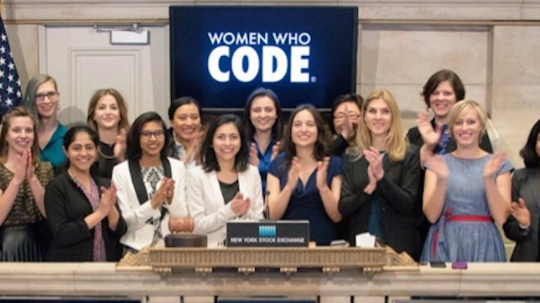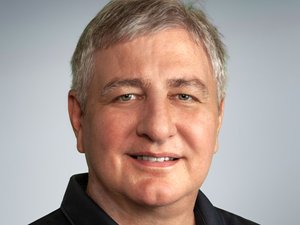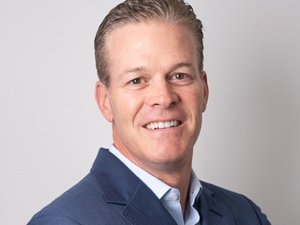
"The stronger our community becomes, the more we can do to change the tech industry for the better," Alaina Percival, CEO and board chair of Women Who Code (WWC), told DC Inno.
"The stronger our community becomes, the more we can do to change the tech industry for the better"
With more than 50,000 members, WWC is one of the largest non-profit organizations advocating for the inclusion of women in the technology sector. Aside from acting as a powerful brand, today, WWC organizes events, supports numerous local chapters across the world and effectively pushes for changes in policy and private business. Founded in 2011, the organization has grown at a truly incredible pace and today, it can be understood as a global network.
The organization, which is headquartered in San Francisco but boasts a significant presence in D.C., is on the front lines of a war waged internally by many companies, between maintaining the status quo and making an effort to diversify their workforces. As part of this effort, WWC brings together women in tech, and others who are interested in the field, to become a collusive group.
Through coding sessions, networking hours and other community-driven events, WWC has become known over the last several years as a leading force.
And while WWC is clearly pursuing a noble cause, the truth is that there are many other non-profits, like Girls In Tech and Women Who Tech, who carry a similar mission. In that light, it's interesting to look back at how WWC became a global force for good; how did they, for example, scale out operations globally in such a short period of time?
By answering these sorts of questions then perhaps others in the fields—like D.C.-based DC Web Women—can follow a tried-and-true model.
In a series of interviews between DC Inno and multiple Women Who Code executives, including D.C. chapter founder Kaylyn Gibilterra, we sought to understand the structure behind WWC as it continues to make waves.
To begin, it's critical to understand what makes WWC special. First, it's all about the people, said Capital One and WWC executive Kim Snipes.
Percival added, "our members are Women Who Code's greatest assets. By focusing on their needs we can empower them to become leaders and even super stars in their field. They can then in turn help to inspire and support other women, and the process continues."
Chapter founders and other community organizers are not typically paid, they are volunteers who contribute their own time and expertise, explained Percival. As such, each individual volunteer's work and commitment to the cause is the underlying engine that powers WWC.
And this brings to light another important element: each WWC chapter is given a great degree of autonomy. There is relatively little direct oversight from the top down on a daily basis.
From India to Seattle, these individual chapters—typically found near city centers—are connected by a cloud-based communications platform that you may have heard of: Slack.
Slack serves as the organization's central nervous system in a lot of ways.
Whether it's the planning of an event, a formal introduction, advice and/or file sharing, Slack is a crucial tool for WWC. This amounts to an agile and free-flowing communications forum that is naturally informal and yet enthusiastic.
In my conversation with Gibilterra, who helps oversees the roughly 3,500-person D.C. WWC chapter, I asked how she founded the group and built it into what it is today. "The size of the city, I think, really helps decide what sort or organization will be formed," she said.
Gibilterra explained that it all started in a nonchalant way, without WWC's brand. She just wanted a place to code after work with other people.
A casual coffee shop meet up slowly transformed into a gathering of more than friends. As a woman in tech, the need for a collaborative, open and friendly space after work was something Gibilterra realized was in need. After all, D.C. is home to a growing number of female developers, programmers, tech entrepreneurs and executives.
From there, the laid-back coding sessions were shared through MeetUp.com. After several months, attendance spiked simply through word of mouth. And so too did the transformation towards becoming a WWC chapter.
Between a laugh, Gibilterra said she isn't a fan of email and that a social media marketing campaign was not something she considered during the early process of attracting new members. "Members sharing their experiences and inviting friends and co-workers through social media and in conversation led to huge growth [on its own]."
To promote members to directors that help lead the chapter, Gibilterra selects other members who have been active, are engaged in the local tech community and consistently provide advice to other women in tech. It is through this peer-review model that many chapters find leaders to refresh their ranks.
Director training includes educational resources to properly set up a social media network, tips to create the group's regional MeetUp page and to build an overall, digital presence. Launching a new, regional chapter from scratch takes roughly two to six months, said Percival.
There are roughly 140 WWC directors across the globe, today.
A global leadership director, who works out of the West Coast HQ, coordinates conference efforts, distributes information and generally brings together upper management to learn from one another. In terms of revenue, most of WWC's events are free but select conferences and other large national events require paid tickets.
While every chapter's founding story is different, Snipes and Percival said that the organization's many chapters are launched, organically, to meet a need in their respective markets. It's not uncommon for an existing group with a similar core mission to adopt the brand, like it occurred in D.C.
"The fact that we've been able to expand so rapidly shows that there is a real need for the support that Women Who Code offers. There are brilliant women around the world that are doing amazing things in the tech industry. Our job is to build a community that connects them to one another, creating a sense of belonging and a community to support them on their career path," Percival told DC Inno.
Nowadays, an average of 200 people attend every WWC DC event, said Gibilterra.
Last month, the DC group celebrated its two year anniversary. Consistency, Gibilterra described, has been key to their success. And that consistency in events and communication, or what others may describe as organizational stability, comes in large part from the help of something called "corporate sponsors."
One of WWC's founding corporate sponsor was Capital One, a financial institution with a significant presence in Northern Virginia that houses numerous technology-centric development divisions. Snipes, along with other local employees, are members of WWC.

Today, Capital One provides the D.C. group with free event space, promotional (digital) support via social media and financial grants to fund things like staffing and programming. In short, Percival said that corporate sponsors have helped WWC become both scalable and sustainable as an organization.
"In order for organizations like Women Who Code to succeed in their mission, they must have resources, and corporate partners are vital to securing those resources and subsidizing costs for the organization," Snipes told DC Inno.
In other markets, outside of D.C., chapters are encouraged to find corporate sponsors that can similarly provide this type of support.




